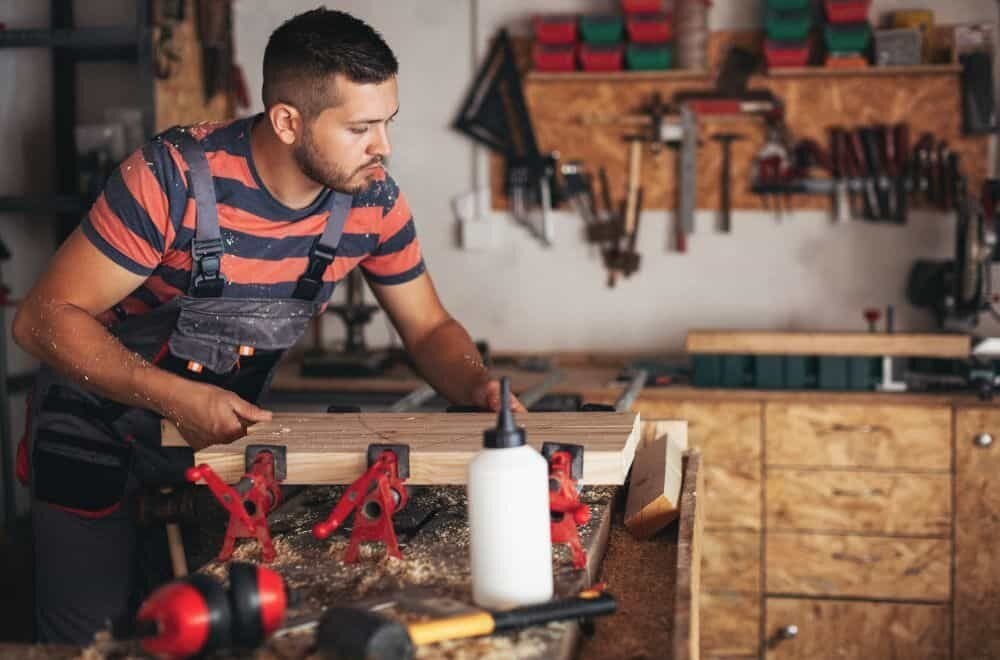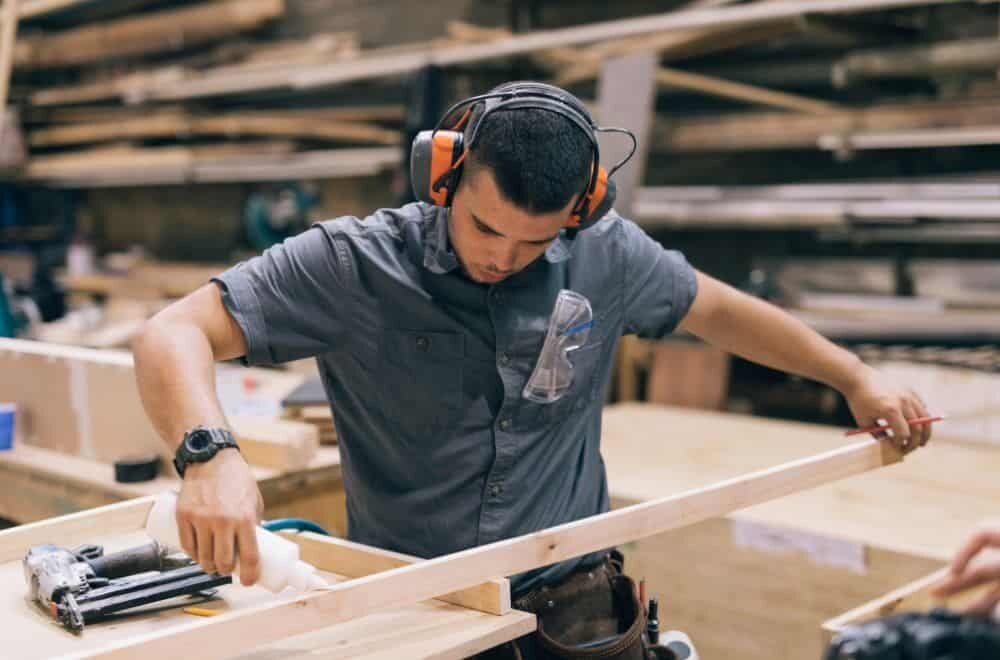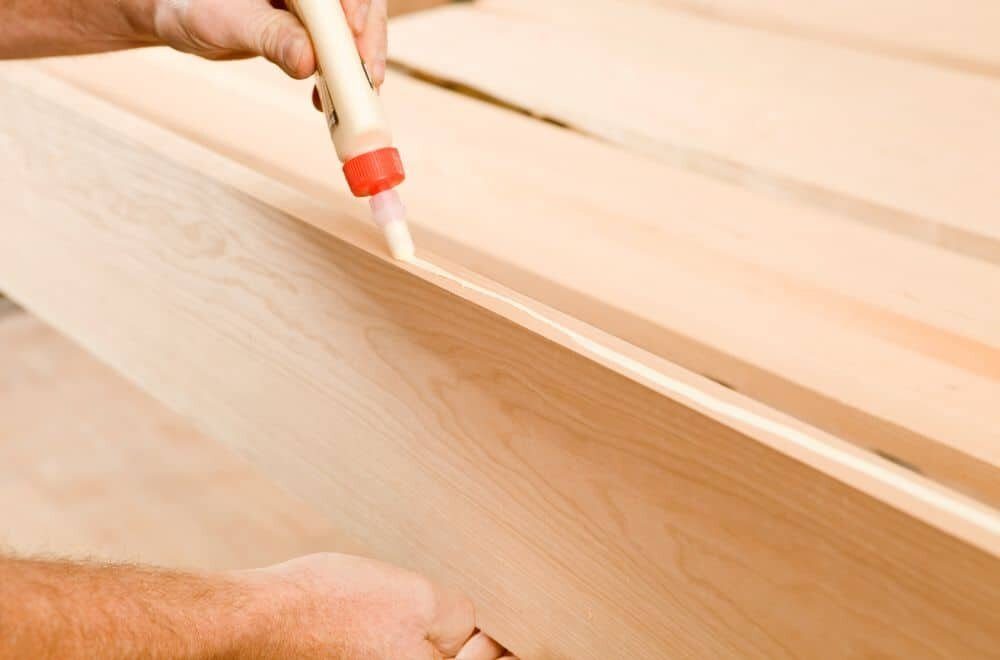Keeping your wooden charcuterie board clean is essential for maintaining its longevity and ensuring your food stays safe to eat. While wooden boards are beautiful and functional, they require a bit more care than other materials. In this article, we’ll go over the best practices for cleaning your wooden charcuterie board to keep it in top condition.
First things first, it’s important to avoid soaking your wooden board in water or putting it in the dishwasher. This can cause the wood to warp or crack, which can ruin the board. Instead, use a sponge or cloth with warm water and soap to clean the board thoroughly. Scrubbing the board well and being generous with the amount of water is more important than using soap in flushing any food and bacteria off the board. After washing, air dry the board immediately on a raised rack or standing on a towel to allow airflow on both sides.
Next, it’s important to oil your wooden board regularly to prevent it from drying out and cracking. Using a soft, lint-free cloth, apply a small amount of food-grade mineral oil to the surface of the board and buff it in until the wood is no longer absorbing the product. Wipe off any excess oil and let the board sit for a few hours before using it again. By following these simple steps, you can keep your wooden charcuterie board in great condition for years to come.
Understanding the Nature of Your Wooden Charcuterie Board
If you’re the proud owner of a wooden charcuterie board, you know how important it is to keep it clean and well-maintained. But before you start cleaning your board, it’s important to understand the nature of the wood and how it reacts to different cleaning methods.
Types of Wood
Charcuterie boards are often made from hardwoods like maple, oak, and walnut. These woods are durable and can withstand the repeated use and cleaning that charcuterie boards require. However, not all woods are created equal, and some may be more prone to warping or cracking than others.
Porosity
Wood is a porous material, which means it can absorb moisture and bacteria. This is why it’s important to properly clean and sanitize your charcuterie board after each use. However, some woods are more porous than others, which can make them more susceptible to absorbing moisture and bacteria.
Cutting vs. Serving
It’s important to note that there is a difference between a cutting board and a serving board. Cutting boards are designed to withstand the repeated use of knives, while serving boards are meant to showcase food and be used for serving only. If you plan to use your charcuterie board for cutting, make sure it’s thick enough to withstand the pressure of a knife.
Cleaning and Maintenance
When it comes to cleaning and maintaining your wooden charcuterie board, there are a few things to keep in mind. First, never soak your board in water or put it in the dishwasher. This can cause the wood to warp or crack. Instead, use a damp sponge or cloth to clean the surface of the board.
It’s also important to regularly sanitize your board to prevent the growth of bacteria. You can do this by using a mixture of coarse salt and lemon juice, or by using a food-safe disinfectant spray.
By understanding the nature of your wooden charcuterie board, you can ensure that it stays in good condition for years to come.
Pre-Cleaning Preparations
Before you start cleaning your wooden charcuterie board, it’s important to gather all the essential cleaning materials and prepare your cleaning area. This will ensure that you have everything you need and that the cleaning process goes smoothly.
Gathering Essential Cleaning Materials
To properly clean your wooden charcuterie board, you will need the following materials:
- Warm water
- Mild dish soap
- Sponge or cloth
- Distilled white vinegar or 3% hydrogen peroxide
- Food-grade mineral oil
- Lint-free cloth
- Optional: Food-grade wax finish, such as butcher block wax or Clapham’s Salad Bowl Finish
Make sure to use food-grade materials that are safe for use with your charcuterie board. Avoid using harsh chemicals or abrasive materials that can damage the wood.
Preparing Your Cleaning Area
Before you start cleaning your wooden charcuterie board, you should prepare your cleaning area. Here are a few steps you can take to prepare:
-
Clear the area: Remove any items from the area around your charcuterie board to prevent them from getting in the way or getting dirty.
-
Lay down a towel: Place a clean towel or cloth on your work surface to protect it from water and cleaning solutions.
-
Set up your materials: Arrange your cleaning materials within easy reach. This will make the cleaning process more efficient and prevent you from having to search for materials mid-way through.
By taking these steps to prepare your cleaning area, you can ensure that you have a clean and organized space to work in. This will make the cleaning process easier and more effective.
The Cleaning Process
When it comes to cleaning your wooden charcuterie board, it’s important to take the right steps to ensure that it stays in good condition and free from bacteria. Here’s a step-by-step guide on how to clean your board properly.
Wiping Down the Board
The first step in cleaning your wooden charcuterie board is to wipe it down with a damp cloth or sponge. This will remove any loose debris and crumbs from the surface of the board. It’s important to use a damp cloth rather than a wet one, as excess water can cause the wood to warp and crack.
Applying the Cleaning Solution
Once you have wiped down the board, it’s time to apply the cleaning solution. There are a few different options for cleaning solutions, but one of the most effective is a mixture of warm water and mild dish soap. You can also use a solution of equal parts white vinegar and water, or a mixture of baking soda and water.
To apply the cleaning solution, dip a clean sponge or cloth into the solution and wring it out so that it’s damp but not dripping. Then, use the sponge or cloth to gently scrub the surface of the board, working in the direction of the grain. Be sure to get into all the corners and crevices of the board.
Scrubbing the Board
After you have applied the cleaning solution, it’s time to scrub the board. Using a soft-bristled brush or a scrubbing pad, gently scrub the surface of the board in circular motions. Be careful not to scrub too hard, as this can damage the wood.
Once you have scrubbed the entire surface of the board, rinse it thoroughly with warm water to remove any remaining cleaning solution. Then, use a clean towel to dry the board completely. It’s important to let the board air dry completely before using it again, as excess moisture can cause the wood to warp and crack.
By following these simple steps, you can keep your wooden charcuterie board clean and free from bacteria, ensuring that it lasts for years to come.
Drying the Board Properly
After washing your wooden charcuterie board, it’s important to dry it properly to prevent any warping or cracking. Here are some tips for drying your board:
-
Air dry: The best way to dry your board is to let it air dry completely. Place it on a raised rack or stand it on a towel to allow airflow on both sides. This will ensure that both sides of the board dry evenly.
-
Towel dry: If you’re in a hurry, you can towel dry your board. Use a clean, dry towel to wipe away any excess water. Make sure to dry both sides of the board thoroughly.
-
Avoid heat: Do not place your board near a heat source or in direct sunlight to dry. This can cause the board to warp or crack.
-
Don’t stack: Do not stack your boards while they are still wet. This can trap moisture between the boards and cause them to warp or stick together.
-
Oil the board: Once your board is completely dry, you can apply a thin layer of food-grade mineral oil to protect and condition the wood. Use a soft cloth to apply the oil in the direction of the grain, and let it soak in for a few hours before wiping away any excess oil.
By following these simple steps, you can ensure that your wooden charcuterie board stays in good condition for years to come.
Maintenance Tips for Your Wooden Charcuterie Board
If you want your wooden charcuterie board to last for years, it’s essential to take good care of it. Here are some maintenance tips to help you keep your board in excellent condition.
Regular Cleaning
To prevent bacteria growth, you should clean your wooden charcuterie board after each use. Here’s how to do it:
- Rinse the board with hot water and use a sponge or cloth to remove any food debris.
- Use a mild dish soap and warm water to clean the board thoroughly.
- Rinse the board with hot water and dry it with a clean towel.
- Let the board air dry completely before storing it.
Proper Storage
Proper storage is crucial to keep your wooden charcuterie board in good condition. Here are some tips:
- Store your board in a dry, cool place away from direct sunlight.
- Never stack your board on top of other boards or objects.
- Store your board flat or on its side to prevent warping.
When to Oil Your Board
Oiling your wooden charcuterie board is essential to keep it from drying out and cracking. Here’s how to do it:
- Apply a food-grade mineral oil to your board using a clean cloth or paper towel.
- Rub the oil into the board, making sure to cover the entire surface.
- Let the oil soak into the board for at least 30 minutes.
- Wipe off any excess oil with a clean cloth or paper towel.
You should oil your board once a month or as needed, depending on how often you use it.
By following these maintenance tips, you can keep your wooden charcuterie board in excellent condition and enjoy it for years to come.


